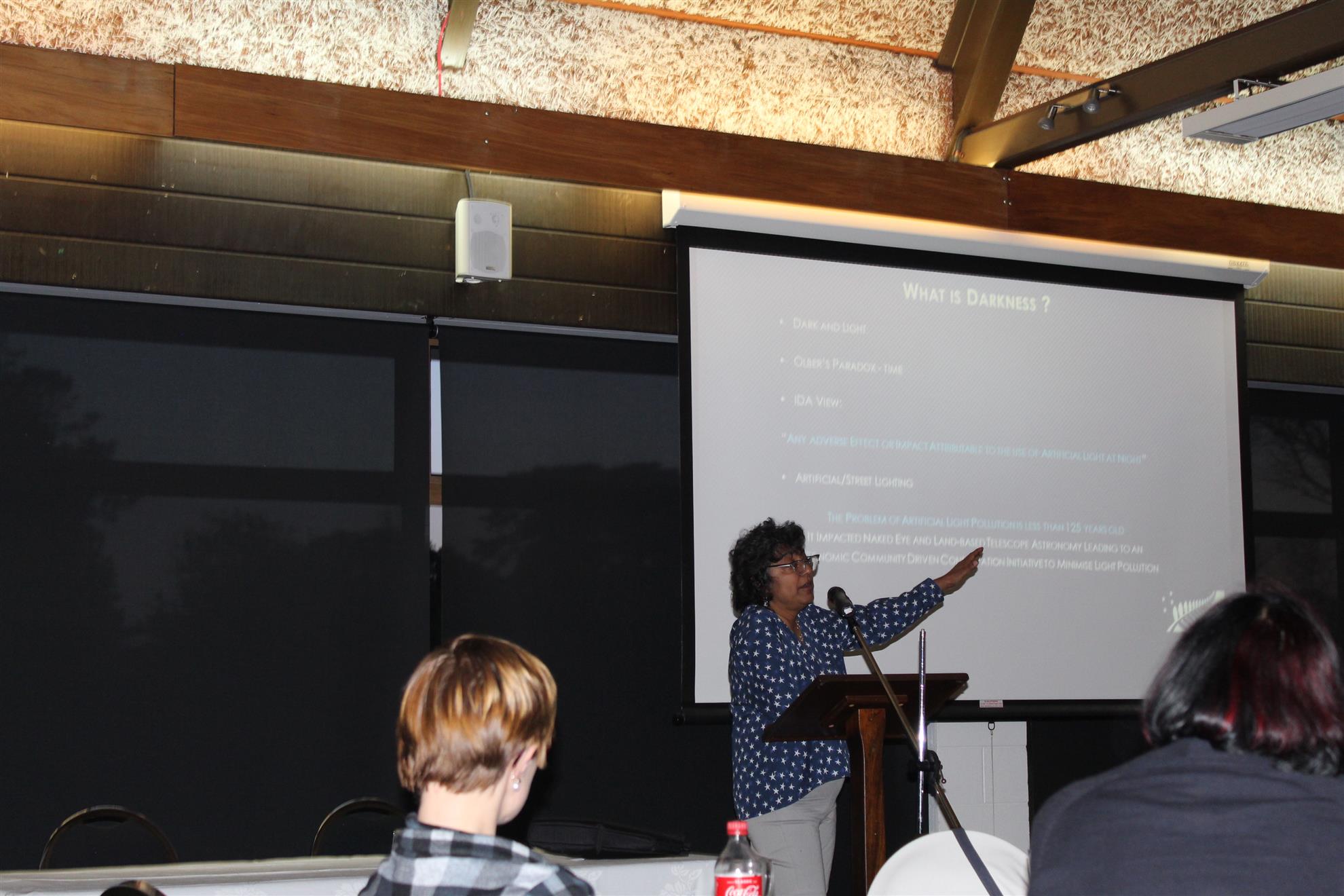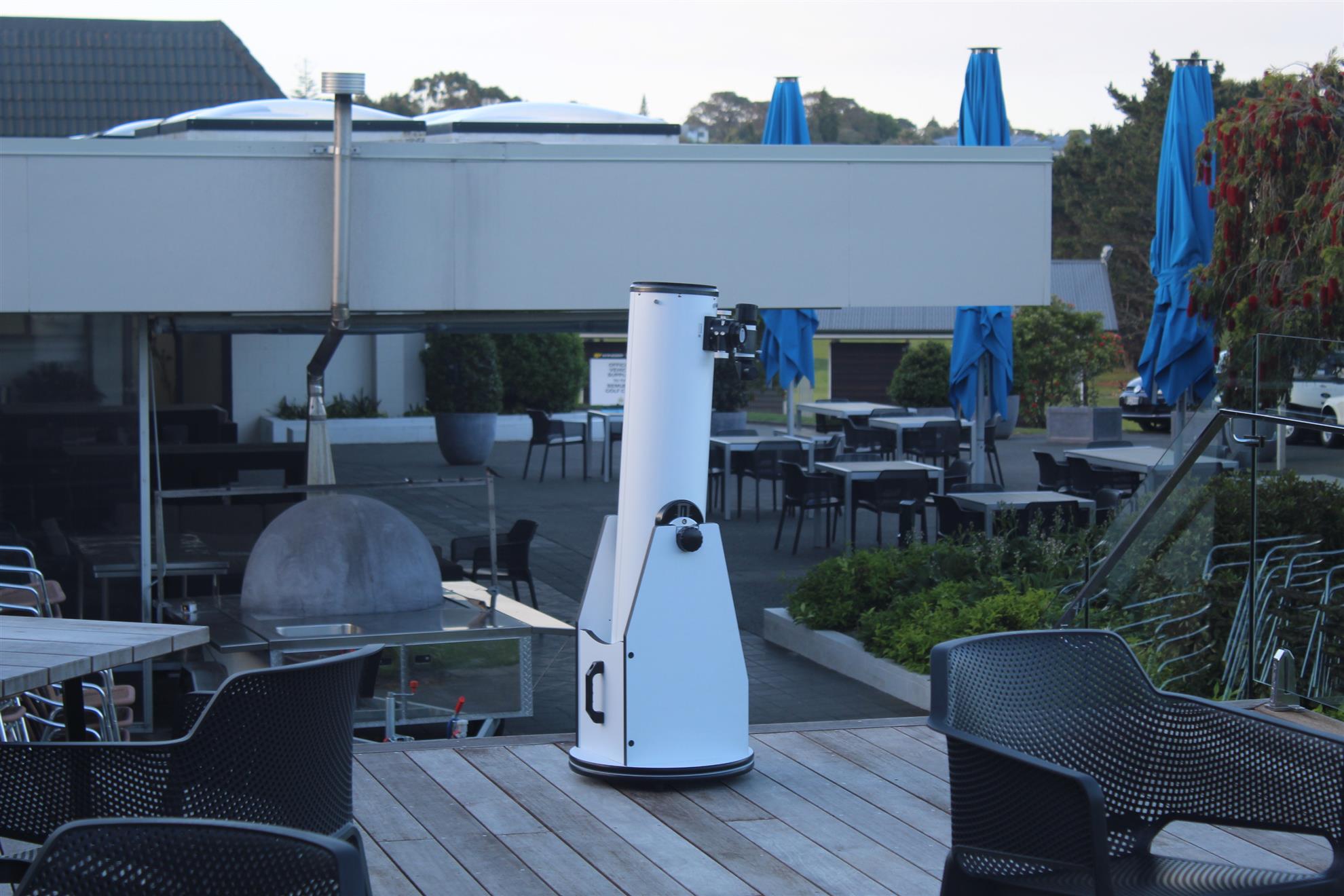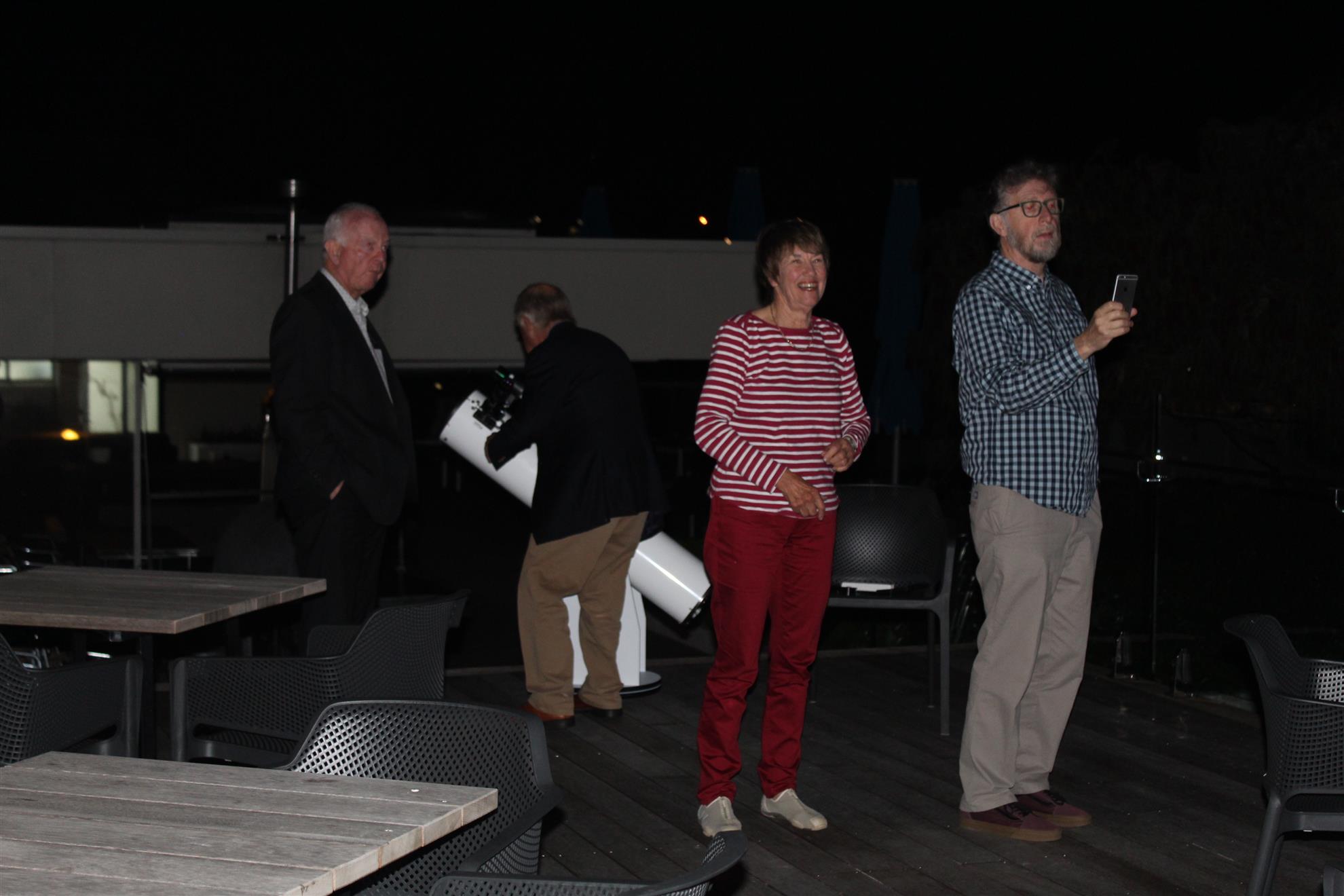Our guest speaker was Nayalini Davies assisted by Gareth Davies.
Nayalini is an Astronomer addressed members and guests on the history of Astronomy, why Astronomy is important, the Solar System, the Milky Way and things beyond, most of which we can’t see.
She also spoke to us about the Dark Sky Project which aims to preserve the darkness of the night sky and protect it from light spill.
Nayalini was supported by Gareth Davies who brought with him a large telescope, by your editors standards, and which once night fell enabled members to look skyward and in your editors case see such things as Saturn’s Rings, and one of its moons for the first time.
Nayalini took us through a history of Astronomy, from ancient times, the Greeks, and before them the Mesopotamians, Roman Times to more modern times when people were working out if the Sun circled the Earth or the other way round. She mentioned Galileo, Kepler, Newton, Halley and Einstein as people who have built what we know as Astronomy today.
Nayalini told us that what we know about the Universe is very limited. What we don’t know is far greater. 
Amongst other things we were told the age of the universe is about 13.8 billion years, our solar system is about 4.6 billion years old and our sun has another 5 billion years of activity left, which I suppose is a bit of a relief to us all.
Our solar system forms part of the Milky Way which consists of about 100 to 4 billion stars. The Milky Way is part of a local group of galaxies scattered throughout the universe. The nearest star to our solar system is Proxima Centauri some two light years away.
The Milky Way is a disc or spiral shaped galaxy with a diameter of between 150,000 and 200,000 ly.
Nayalini spoke of the Polynesian triangle and the navigation skills demonstrated by the Polynesians you managed to inhabit islands between Hawaii New Zealand and Easter Island.
Nayalini, also spoke to the Dark Sky Project. (and for more see Darkskynz.org/ )
One of the problems of the developed world is that one third of humanity can no longer see the Milky Way. 80% of the United States and 60% of Europe cannot see the Milky Way.
This is because artificial light at night creates itself a barrier that prevents light produced by stars from being seen on many parts of the surface of the earth.
The problem is a first world problem as first world countries have the brightest lights.
New Zealand Australia are the darkest areas of the developed world. In New Zealand for example the Milky Way is visible from 96.5% of New Zealand’s land area. Having said that however most people in New Zealand that in the major cities which emit high levels of light pollution so only a lucky few can see the Milky Way in all of its glory.
Nayalini told us that Waiheke is five times darker than the city centre and great barrier is even darker the aim is to make darkness a conservation initiative so that people in Auckland for example find areas where they can see the Milky Way.
In addition to the dark sky area in the Mackenzie country and specifically around Lake Tekapo, efforts have been made to create a now certified International dark sky sanctuary on Great Barrier Island. Efforts are also underway on Waiheke to counter local light pollution and create a similar sanctuary to give the residents of that island a similar resource to that on Great Barrier.
Nayalini made the comment that the Dark Skys of the Tekapo area attract tourists, so much so that Central Otago on the other side of the Lindis Pass would like to create their own Dark Sky Sanctuary for locals and tourists to enjoy.
Aucklandcouncil is buying into the project. Nayalini told us that Auckland Transport now dims street lights between 11 p.m. and 6 a.m.. Apparently streetlights constitute 50% of light pollution in Auckland so any reduction in their effect has to be a good thing.
Naylini’s address was well received by members present.
Our Guests at our meeting at Remuera Golf Club were...